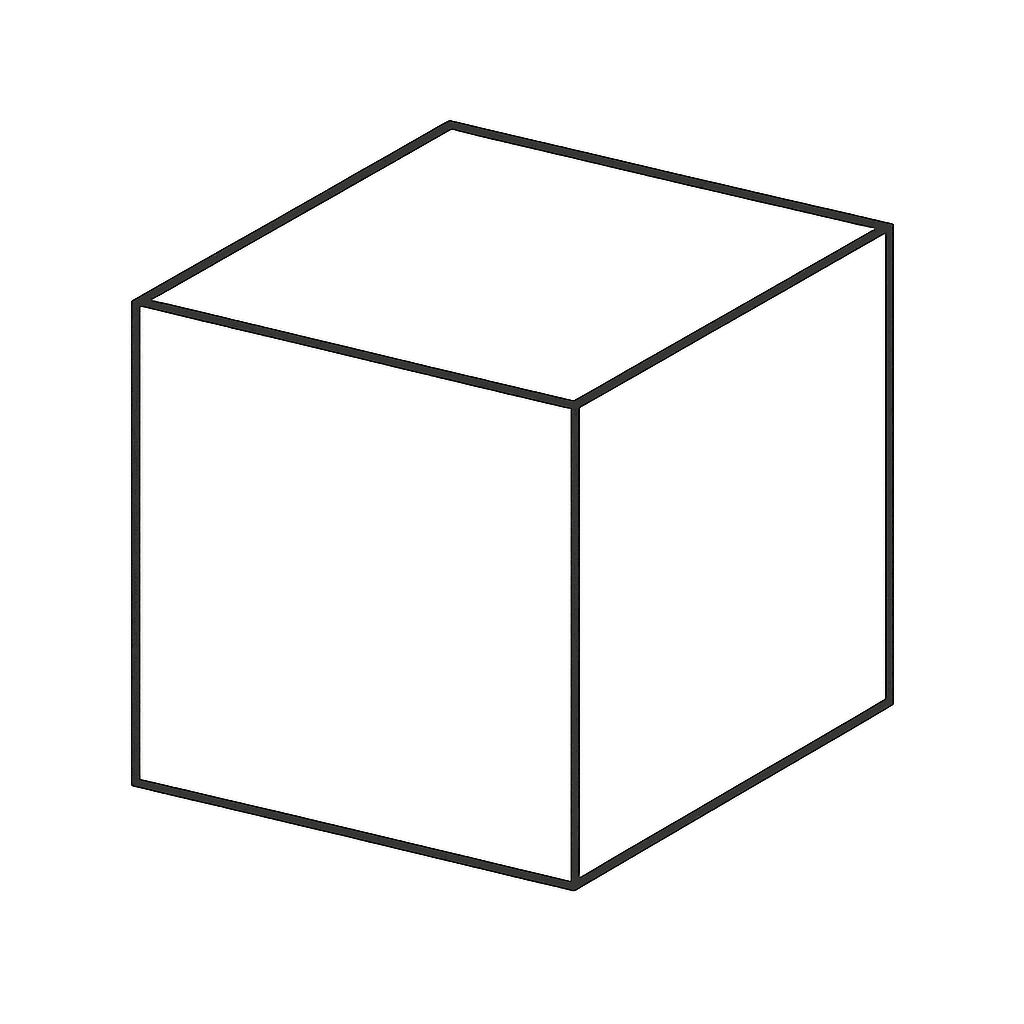The five Platonic solids
The five Platonic solids are the only spatial figures where all faces are the same regular polygons, and where the figure closes completely symmetrically, such as a cube.

- All faces are congruent, regular polygons.
- The same number of faces meet at each vertex.
- The figure is convex (no inward angles).
Platonic solids are named after the philosopher Plato, who described them in his work Timaeus.
There are exactly five:
| Name | Number of faces | Type of faces |
|---|---|---|
| Tetrahedron | 4 | Equilateral triangles |
| Cube (hexahedron) | 6 | Squares |
| Octahedron | 8 | Equilateral triangles |
| Dodecahedron | 12 | Regular pentagons |
| Icosahedron | 20 | Equilateral triangles |
Why are there only five?
It is mathematically proven that there are only five Platonic solids. The explanation lies in the angle sum at the vertices.
For a figure to close in space, the angle sum of the faces meeting at a vertex must be less than \( \large 360^\circ \).
- For triangles (\( \large 60^\circ \) per angle), 3, 4 or 5 triangles can meet – giving the tetrahedron, octahedron and icosahedron.
- For squares (\( \large 90^\circ \) per angle), 3 squares can meet – giving the cube.
- For pentagons (\( \large 108^\circ \) per angle), 3 pentagons can meet – giving the dodecahedron.
For hexagons or polygons with more sides, the angles are so large that at least three of them together give \( \large 360^\circ \) or more, and the figure can therefore not close in space.